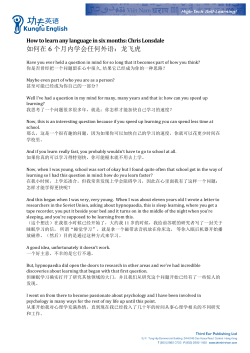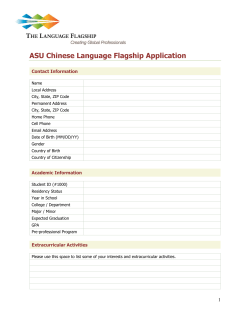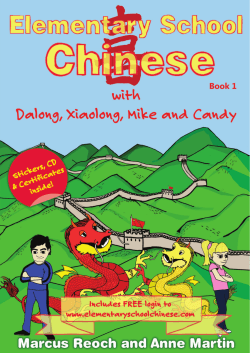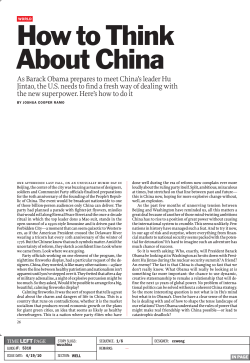
The Classification of Sinitic Languages: What Is “Chinese”? Victor H. Mair (梅維恒)
Breaking Down the Barriers, 735-754 2013-1-050-035-000365-1 The Classification of Sinitic Languages: What Is “Chinese”?* Victor H. Mair (梅維恒) University of Pennsylvania Chinese as the name of a language is a misnomer. It has been applied to numerous dialects, styles, and languages from the middle of the 2nd millennium BC. Sinitic is a more satisfactory designation for covering all these entities…. The present-day spoken languages are not mutually intelligible (some are further apart than Portuguese and Italian), and neither are the major subdivisions within each group. Søren Egerod (1988) I think we should refer to the complex of linguistic forms now called Chinese “dialects” as the Sinitic language family. Jerry Norman (2009a) If one’s terms are imprecise, one’s language will be illogical. 名不正, 言不順. Analects, 13.3 Terminological imprecision, particularly with regard to the Chinese word fangyan and its translation by the English word “dialect,” has resulted in a situation whereby Sinitic language taxonomy may variously be described as chaotic, impenetrable, or functionally absent. For such a large, diverse agglomeration of languages as Sinitic, this is an unacceptable state of affairs. Through rigorous definition and careful analysis, it is possible to arrive at a clearer understanding of the nature of the relationships among the constituent languages of the Sinitic Language Group/Family (SLG/F). Key words: Sinitic languages, languages versus dialects, topolects, Putonghua * For assistance in researching various aspects of this study, I am deeply grateful to Jerry Norman, W. South Coblin, Tsu-Lin Mei, Wolfgang Behr, William H. Baxter, Guillaume Jacques, Bai Weiguo, Huang Heqing, Xu Wenkan, Yao Dehuai, Sanping Chen, Jidong Yang, David Prager Branner, Thomas S. Mullaney, Mark Elliott, Robert Lindsay, Linda Chance, Alban Kojima, S. Robert Ramsey, William C. Hannas, Neil Kuster, Minkyung Ji, and Daniel Sou. The author alone, however, is accountable for all facts and interpretations presented herein.
© Copyright 2025












